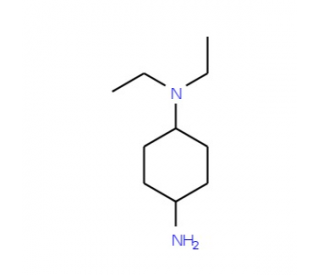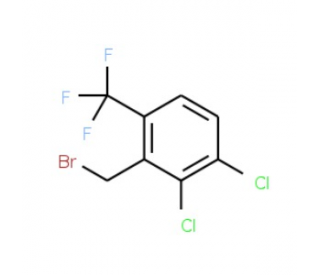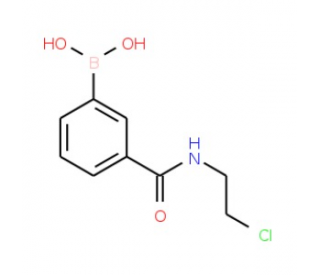詳細(xì)說(shuō)明
Purity
>80%, by SDS-PAGE under reducing conditions and visualized by Colloidal Coomassie? Blue stain at 5 μg per lane
Endotoxin Level
<1.0 EU per 1 μg of the protein by the LAL method.
Activity
Measured by its ability to cleave the fluorogenic peptide substrate, Mca-PLGL-Dpa-AR-NH 2 (Catalog # ). The specific activity is >12 pmol/min/μg, as measured under the described conditions. See Activity Assay Protocol on .
Source
Chinese Hamster Ovary cell line, CHO-derived Thr25-Gly420, with C-terminal 6-His tag
Accession #
N-terminal Sequence
AnalysisThr25
Predicted Molecular Mass
44 kDa
SDS-PAGE
40-70 kDa
8489-NA |
| |
Formulation Supplied as a 0.2 μm filtered solution in MES and NaCl. | ||
Shipping The product is shipped with polar packs. Upon receipt, store it immediately at the temperature recommended below. | ||
Stability & Storage: Use a manual defrost freezer and avoid repeated freeze-thaw cycles.
|
Assay Procedure
Materials
Assay Buffer: 0.1 M NaOAc, 0.2 M NaCl, pH 3.5
Recombinant Human Napsin A (rhNAPSA) (Catalog # 8489-NA)
Substrate: MCA-Pro-Leu-Gly-Leu-Dpa-Ala-Arg-NH2 (Catalog # ), 2 mM stock in DMSO
F16 Black Maxisorp Plate (Nunc, Catalog # 475515)
Fluorescent Plate Reader (Model: Gemini EM by Molecular Devices) or equivalent
Dilute rhNAPSA to 40 μg/mL in Assay Buffer.
Incubate 50 μL aliquot of 40 μg/mL rhNAPSA at room temperature for 20 minutes.
Dilute incubated rhNAPSA to 8 μg/mL in Assay Buffer.
Dilute Substrate to 20 μM in Assay Buffer.
Load 50 μL incubated rhNAPSA into a plate, and start the reaction by adding 50 μL of 20 μM Substrate. Include a Substrate Blank containing 50 μL of Assay Buffer and 50 μL of 20 μM Substrate.
Read at excitation and emission wavelengths of 320 nm and 405 nm (top read), respectively in kinetic mode for 5 minutes.
Calculate specific activity:
Specific Activity (pmol/min/μg) = | Adjusted Vmax* (RFU/min) x Conversion Factor** (pmol/RFU) |
| amount of enzyme (μg) |
*Adjusted for Substrate Blank
**Derived using calibration standard MCA-Pro-Leu-OH (Bachem, Catalog # M-1975).
Per Well:
rhNAPSA: 0.4 μg
Substrate: 10 μM
Background: Napsin A
Human NAPSA (also called Napsin A) is a 38 kDa glycosylated aspartic protease (1-3). NAPSA/Napsin A is synthesized as a 420 amino acid (aa) proenzyme containing a signal peptide (up to 25 aa), an activation peptide (38 aa), and a 357 aa mature enzyme. Mature human NAPSA/Napsin A shares 74% and 73% aa sequence identity with mature mouse and rat NAPSA/Napsin A, respectively. The NAPSA/Napsin A proenzyme is expressed in lung epithelial cells and within the kidney (3). Kidney dysfunction is associated with a decrease in NAPSA/Napsin A excretion in urine (1). NAPSA/Napsin A expression is also used as a marker for clear cell ovarian carcinomas, pulmonary adenocarcinomas, and renal cell carcinomas (4-8). NAPSA/Napsin A is involved in processing surfactant protein B in type II pneumocytes (9).
References:
Schauer-Vukasinovic, V. et al. (2001) Biochim. Biophys. Acta 1524:51.
Tatnell, P.J. et al. (1998) FEBS Lett. 441:43.
Schauer-Vukasinovic, V. et al. (1999) FEBS Lett. 462:135.
Yamashita, Y. et al. (2014) Mod. Pathol. PMID 24721826
Skirnisdottir, I. et al. (2013) BMC Cancer. 13:524.
Ordonez, N.G. (2012) Adv. Anat. Pathol. 19:66.
Jagirdar, J. (2008) Arch. Pathol. Lab. Med. 132:384.
Ao, M.H. et al. (2014) Hum. Pathol. 45:926.
Brasch, F. et al. (2003) J. Biol. Chem. 278:49006.
Entrez Gene IDs:
9476 (Human); 16541 (Mouse); 60575 (Rat)
Alternate Names:
Asp 4; ASP4; Aspartyl protease 4; EC 3.4.23; EC 3.4.23.-; EC 3.4.23.15; EC 3.4.23.3; EC 3.4.23.5; KAP; Kdap; NAP1napsin-A; NAPA; NAPApronapsin A; NAPSA; napsin A aspartic peptidase; Napsin A; Napsin-1; SNAPA; TA01/TA02










 粵公網(wǎng)安備44196802000105號(hào)
粵公網(wǎng)安備44196802000105號(hào)